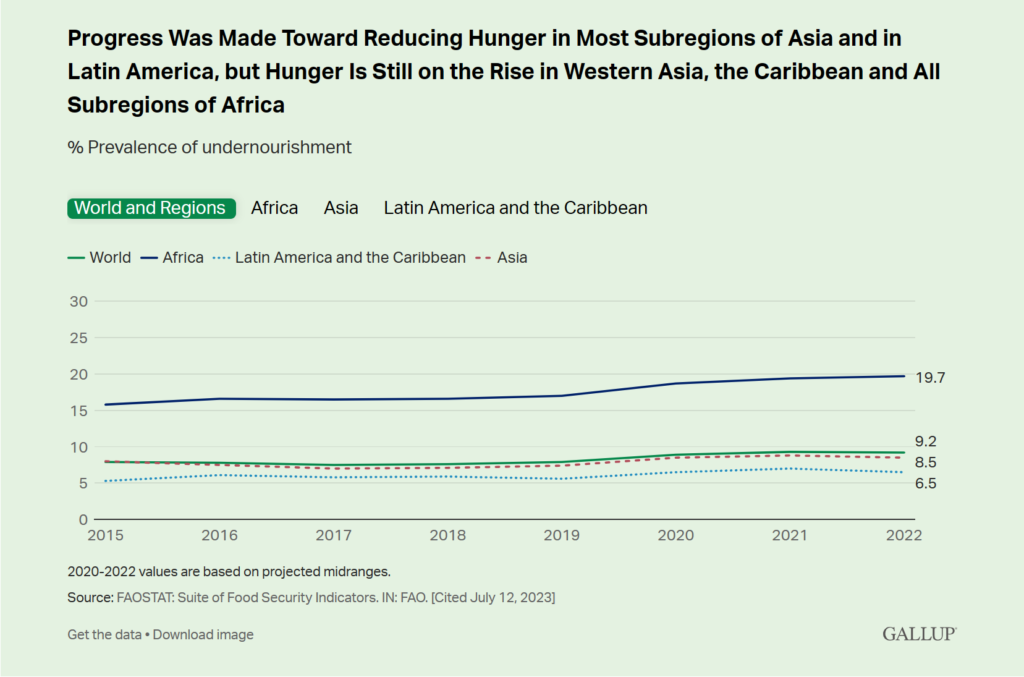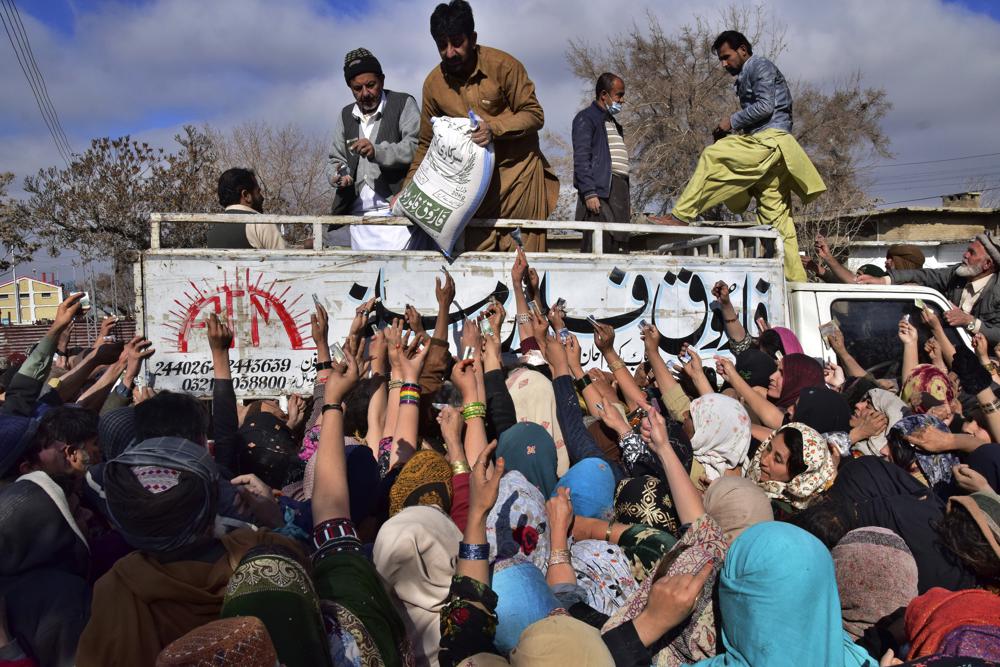Hunger, food insecurity still higher than before pandemic – At the global level, there was no progress toward reducing food insecurity in 2022

30 August 2023 (Gallup) – Although hunger at the global level stopped rising in 2022, the latest State of Food Security and Nutrition in the World (SOFI) report shows that it is still increasing in many places around the world and that levels of both hunger and food insecurity remain higher today than they were before the pandemic.
The report released in July draws on data from many sources — including food security data collected for the Food and Agriculture Organization of the United Nations (FAO) via the Gallup World Poll — to provide the latest update on the world’s progress toward ending hunger and ensuring food security.
This update shows that while hunger is no longer on the rise at the global level, the world is still far off track to reaching its sustainable development goal (SDG) of achieving “zero hunger” by 2030.
In addition to examining these global trends, the report focuses on a megatrend that needs to be fully understood to get the world back on track — urbanization. For the first time, the report examines differences in food insecurity through the lens of rural, peri-urban and urban populations and looks at how food supply, cost and demand intersect across the urban-rural continuum.
The prevalence of undernourishment** — the FAO’s traditional indicator of the extent of hunger — was 9.2% in 2022, virtually unchanged from 2021. Hunger affected between 691 million and 783 million people last year, which is 122 million more than in 2019, before the pandemic.
Further, on the current trajectory, almost 600 million people are projected to still be chronically undernourished in 2030 — about 119 million more than if neither the pandemic nor the war in Ukraine had occurred and 23 million more than if the war had not happened.
The relative lack of change in hunger between 2021 and 2022 at the global level hides important differences. In Asia and Latin America, there has been some progress in reducing hunger. However, hunger is still on the rise in Western Asia, the Caribbean and all regions of Africa, where the proportion of the population facing hunger — 20% — is much larger compared with the rest of the world.
For the second consecutive year, the global prevalence of moderate or severe food insecurity — which the FAO inform annually using the Food Insecurity Experience Scale (FIES) data, collected in large national surveys, the Gallup World Poll and other sources — remained unchanged, but far above pre-pandemic levels.
In 2022, an estimated 29.6% of the world’s population — 2.4 billion people — were moderately or severely food insecure, which means they did not have access to adequate food. This is approximately 391 million more people than in 2019, before the pandemic, and 745 million more than in 2015, when the U.N. launched the 2030 SDG agenda. [more]


